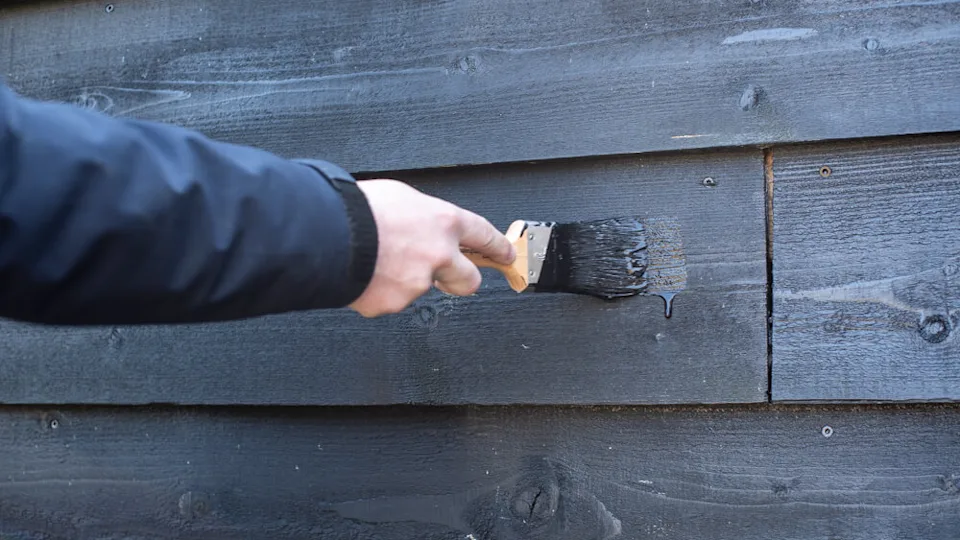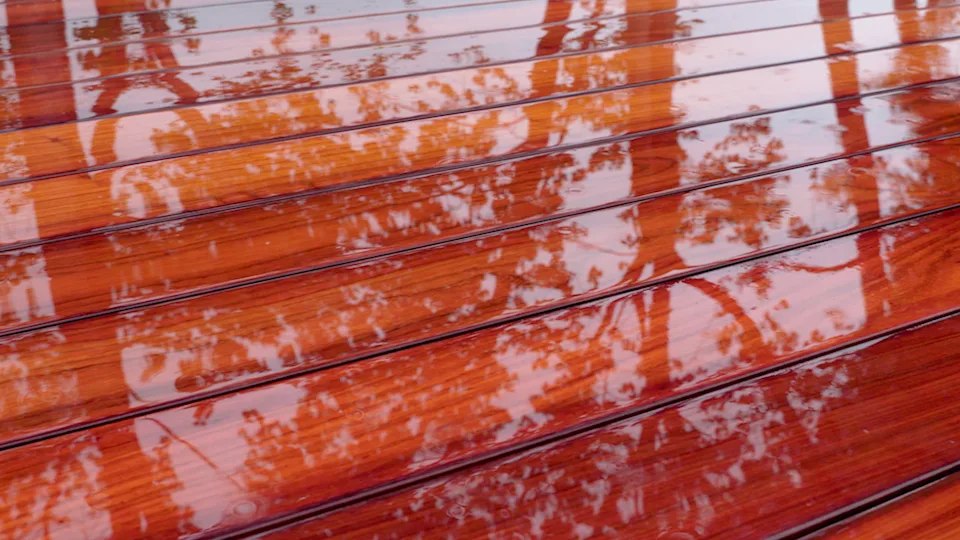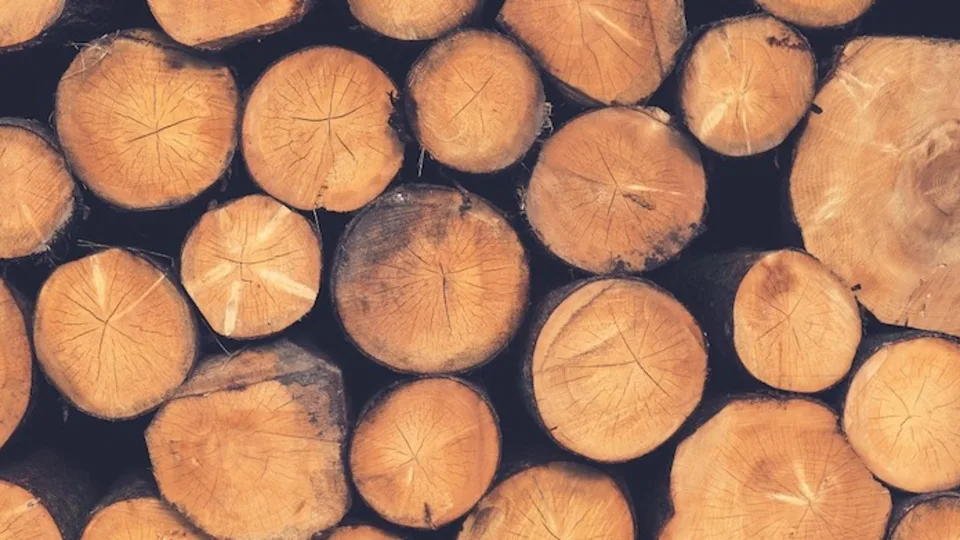Log cabin treatment timing mistakes: Too early or too late? Here’s what to do
When it comes to treating your log cabin, timing is everything. If you apply your wood treatment too soon, you risk sealing in moisture which can lead to peeling, black patches or rot. Wait too long, and your log cabin could suffer from weather damage, UV degradation, or warping.
In this guide, we’ll help you to understand just what happens if you treat your log cabin either too early or too late and show you how to get your wood protection just right.
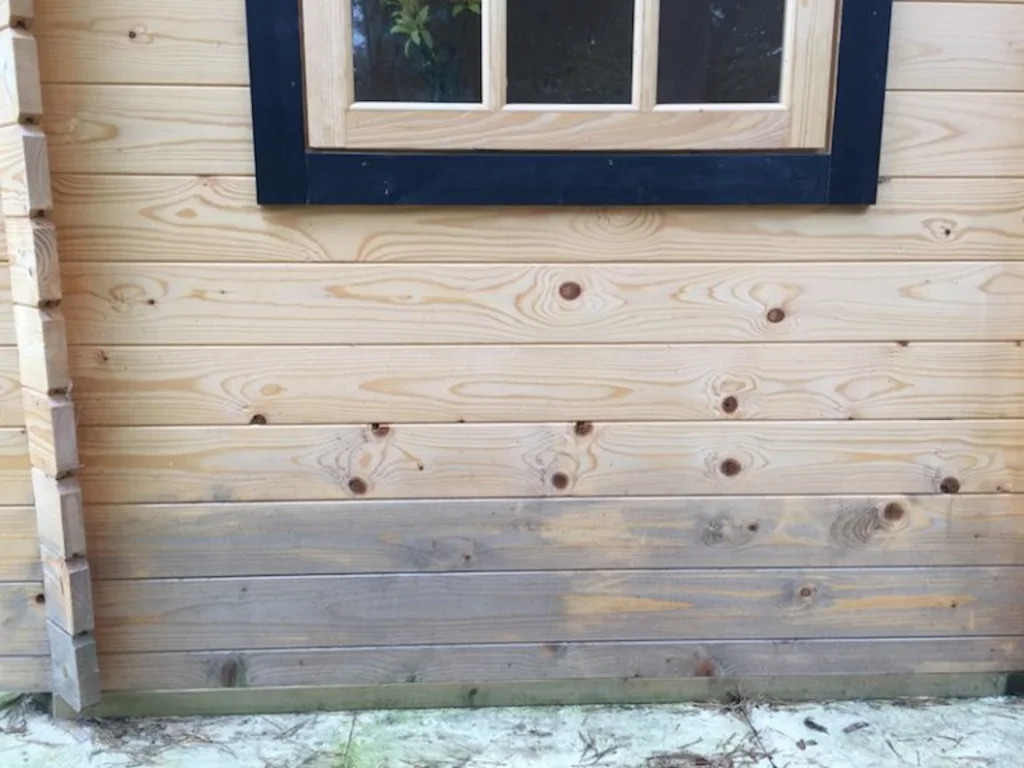
Why is timing so important when it comes to log cabin wood treatment?
Timber is a natural material that continues to adapt to its environment long after the milling process. Freshly machined wood tends to contain higher moisture levels. Find out more about moisture content in timber in our blog. Once your log cabin has been delivered, you’ll need to give the wood time to settle and dry out. If you apply your treatment before the wood has dried out, the product won’t absorb properly. However, if you want too long, the wood will begin to degrade, crack or discolour, especially in exposed areas.
How to fix a log cabin that’s been treated too early
If you suspect you might have applied your treatment before the timber was fully dry, don’t panic! This is a common mistake and can usually be corrected. The first step is to assess the surface. Look for signs such as uneven colour, flaking or persistent dampness
Resist the urge to apply more treatment immediately, as doing so will only make the problem worse. Instead, give your log cabin time to dry out fully. Open the doors and windows on dry days to help increase air circulation and allow several days, or even weeks to pass, depending on the season and weather.
If you want to be more precise, you can use a moisture meter to check the timber’s moisture content. Ideally, the moisture content should be below 20% before reapplying any treatment. Once the wood is dry, you may need to lightly sand areas where the treatment has failed or bubbled, especially around the joints, corners, and end grain.
After you’ve prepared the area, reapply a high-quality, breathable wood treatment that is specifically designed for log cabins. These treatments allow trapped moisture to escape over time while still offering long-term protection against water and UV damage.
What happens if you want to long to treat your log cabin?
On the other hand, waiting too long to treat your log cabin can also cause problems. While untreated timber may look fine for a few weeks, it can begin to deteriorate, especially in wet or exposed locations.
One of the first signs that your log cabin needs treatment is greying of the timber caused by UV rays breaking down wood fibres on the surface. While this is mostly cosmetic at first, it can lead to deeper structural problems if left untreated. Over time, prolonged exposure to rain, wind and sun causes the wood to expand and contract repeatedly. This movement can create cracks, splits or warping, especially in thinner panels or end grains.
Untreated timber also becomes more absorbent. Once water begins to soak into the grain, it can lead to internal dampness, encouraging rot and fungal decay. These problems are much harder to resolve after the fact may require replacing parts of the structure altogether.
The images below show a log cabin that has been left untreated and the impact on the wood.
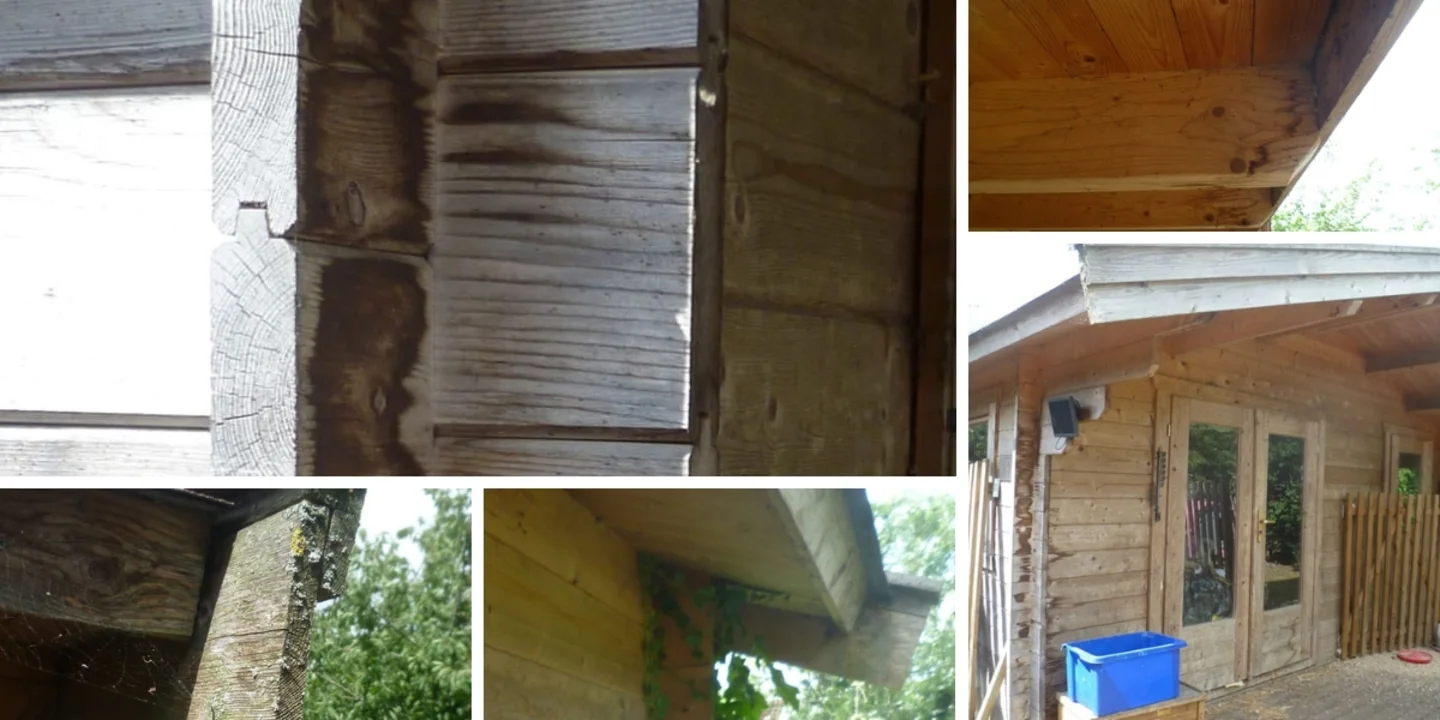
How to restore and treat a weathered log cabin
If your log cabin has been left untreated for several weeks or months, the first step is to clean the timber thoroughly. Start by washing the surface with a hose or pressure washer on a low setting to remove dirt, mould spore or loose fibres. If the timber has already turned grey, you may want to lightly sand it back to restore the natural wood tone and ensure proper adhesion for the treatment.
We also recommend testing the wood’s moisture content at this stage too. Just because the wood looks or feels dry, it doesn’t mean it is. Moisture trapped beneath the surface can still prevent the treatment from absorbing properly. Once the wood is dry (ideally below 20% moisture) you can apply a suitable treatment.
Choose a microporous, UV-resistant wood treatment such as our Carefree Protectant Timber Treatment. Apply at least two coats, allowing each to dry thoroughly before adding the next. Make sure you focus on particularly vulnerable areas such as window frames, doorways and the base of the cabin, where water is most likely to collect.
When is the right time to treat your log cabin?
The ideal window for treating your log cabin is usually one to three weeks after installation, depending on weather conditions and the initial moisture content of the timber. If you installed your log cabin during dry, warm weather and it’s had time to air out, it may be ready sooner. If you installed your log cabin during the winter or after a long period of rain, you’ll need to wait longer.
Treat at the right time, not just quickly
It can be tempting to treat your log cabin as soon as it’s installed, especially if you’re keen to get the interior ready or start using it straight away. However, treating your log cabin too early or waiting too long can lead to unnecessary problems. But the good news is, with a little patience and preparation, most issues can be fixed or avoided entirely.
By understanding how timber behaves, testing the moisture levels and using the right treatment, you can ensure you protect your log cabin over the long-term. And remember: wood treatment isn’t just about the appearance of your log cabin, it’s essential for keeping your cabin weather-resistant, structurally sound, and looking it’s best for years to come. At Tuin, all of our log cabins and garden buildings have a 10-year guarantee but this is dependent on whether the log cabin has been treated regularly.
Need help choosing the right treatment?
At Tuin, we stock a wide range of log cabin treatment options to help you keep your log cabin protected from the elements and looking its best throughout its lifetime.
If you’re unsure about which product to use, when or how to apply it, please get in touch with our expert team. We have over 50 years’ industry experience and can offer hands-on, experience-driven advice and guidance.




